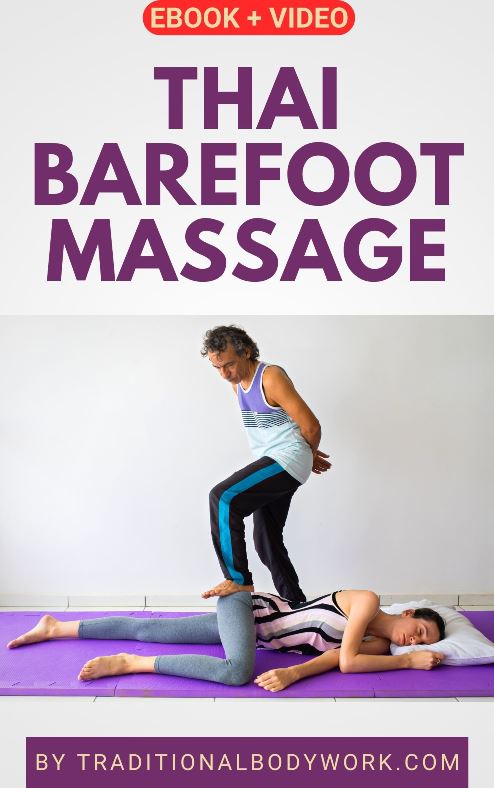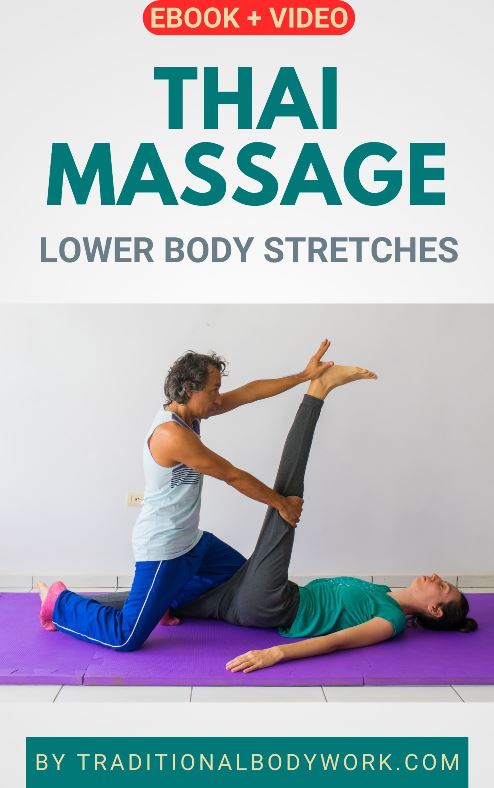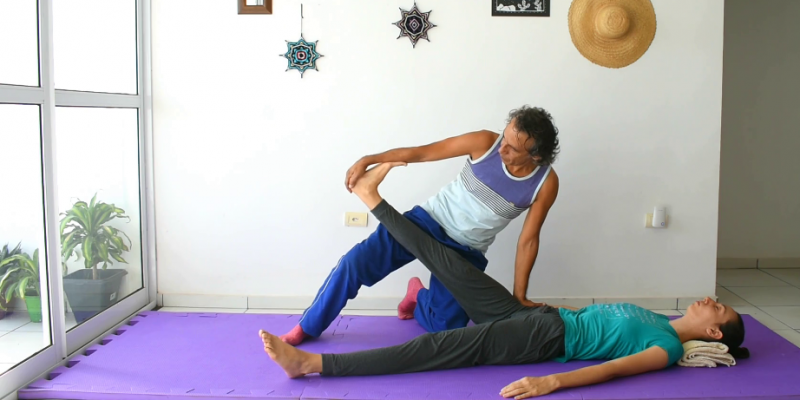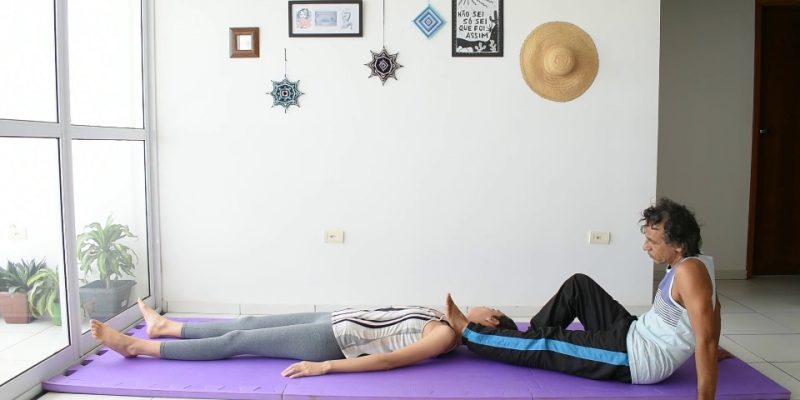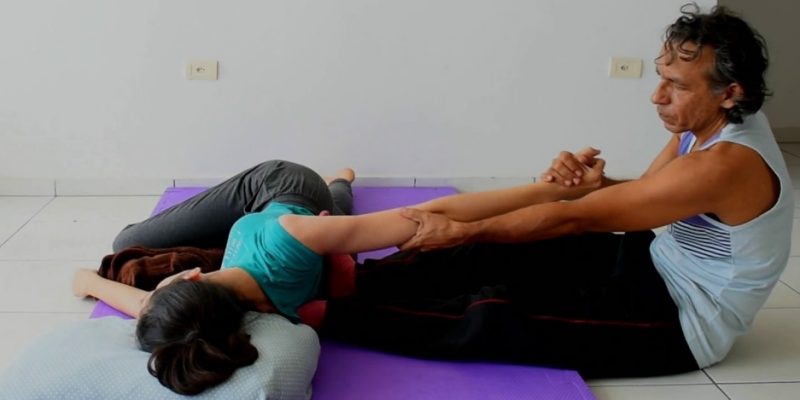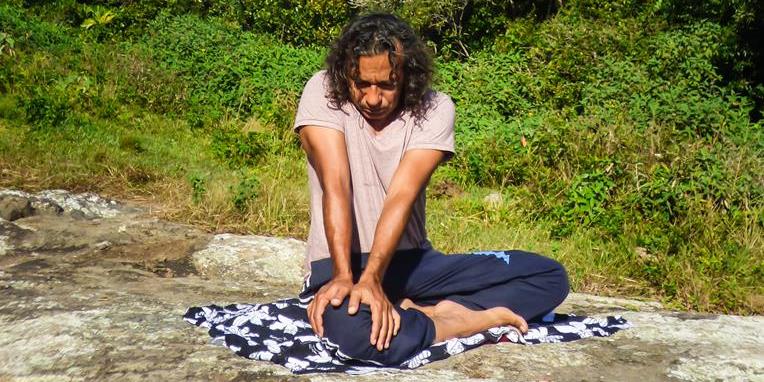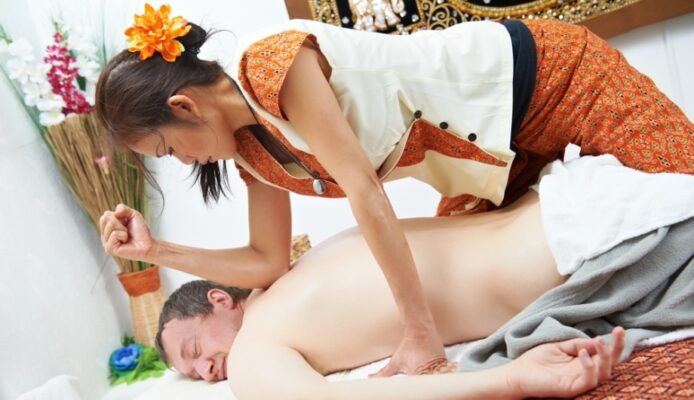
Applying proper body mechanics and ergonomics while giving Thai Massage is important for therapists to prevent repetitive strains that can cause inflammations and injuries, which may finally lead to not being able to work as a massage practitioner for a while — at best, or maybe not ever again.

The most common issues Thai masseurs encounter are irritations and pains of the thumbs, wrists, elbows, shoulders, neck, lower back, and knees. Luckily there are a range of techniques and ways of working that need less effort and can easily prevent these types of health problems.
Perhaps the most important thing is working with one’s bodyweight while applying pressure or acupressure, that is, one best “leans in” with the arms stretched (that is, keeping them straight), as much as possible in a perpendicular position while hovering over i.e. being on top of the client.
Doing so prevents strains for the muscles and joints of the arms, notable those of the wrists, elbows and shoulders, while at the same time saving energy. By the way, bodyweight can also be used as leverage, that is, one can (and should) use bodyweight to “lean out.” (see the lead image of this post).
Another way to save much needed energy is to first work on one side of the client’s body before massaging the other side, instead of repeatedly switching from one side to the other. For instance, you can start with the client placed in the supine position (lying on the back) and start with the left foot going up massaging the left leg and finally the left arm and left hand. After that, you start with the right foot doing the same up to the right hand, instead of switching between left foot and right foot, then left leg and right leg, and so on.

Additionally, Thai Massage offers many techniques that not need the hands to carry them out. For instance, massage can also be applied with the elbows, forearms, knees, buttocks, and the feet. Using various body parts to do a massage session prevents repetitive strains on just one body part, such as the thumbs or wrists. Of course, the therapist needs to learn to use those other body parts, but there are many training courses available that deal with this, such as Hands Free Thai Massage or Thai Barefoot Massage.
As Thai Massage is typically given on the floor on a mat, it offers multiple ways of sitting on the floor. This can keep the therapist’s body in movement and supple, likewise preventing strains for the knees, the buttocks, back, neck, or other body parts. Apart from sitting or kneeling, the massage practitioner can also stand, lie down, or squat while doing certain techniques.
Another way to avoid strains is to just use another technique depending on the type of client you’re working with. For instance, somebody with very big and hard muscles will be better treated with the elbows and knees instead of using your thumbs and palms. Not only will it save you energy and possible overstraining, it will also be more efficient for your client.
In fact, Thai Massage has a large toolbox stuffed with techniques, and there are always plenty of different types of techniques that give the same result for your client, while at the same time doing massage in the most efficient and healthy way for you as a practitioner.



